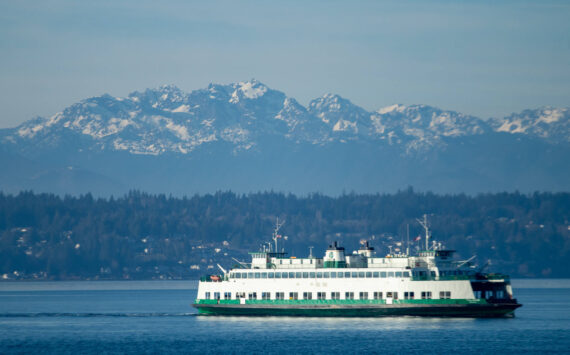The Washington Trust for Historic Preservation announced yesterday that proposed State budget cuts could negatively impact Main Street businesses by cutting funding for the Washington Main Street program by nearly 70 percent.
According to Washington Trust Field Director Chris Moore, the current budget proposal includes a 60 percent staff reduction and cuts $366,000 from the program’s $480,000 biennial budget. The Washington State Main Street Program (WSMSP) serves more than 80 small towns and urban business districts across the state, guiding local leaders through a step-by-step process of revitalizing each community. The proposed budget will gut the 2.5-person office in Olympia, leaving only the program manager and eliminate funding for technical and field services support.
“The State’s Main Street Program is a low-cost program that generates an extremely high return on the State’s investment,” said Moore in a statement. “As an economic stimulus, the [program] has proven to be one of the most cost-efficient economic development programs at work in the state.”
Currently, WSMSP staff is made up of one Downtown Program Manager, one Downtown Program Coordinator, and a half-time Downtown Administrative Assistant. Gov. Chris Gregoire’s current proposed budget for 2009-2011 would cut staff to just the Downtown Program Manager. WSMSP currently provides services to 11 Certified Main Street communities, start-up level Main Street communities, and more than 70 other communities participating in the tiered system.
Since its creation 25 years ago, WSMSP has overseen the creation of 11,390 jobs, 3,534 new and expanded businesses, and investment of $388 million in commercial infrastructure. According to Washington Trust, for every $328 invested by the State, WSMSP has created one new job. Similarly, every dollar invested in the program has leveraged $115 in private investment.
As one example, Moore pointed to Bainbridge Island, which became a Main Street community in 1998. The Main Street program has helped to create 160 new businesses, 665 new jobs, and over $18 million in private reinvestment downtown.
“There is no other organization in the state providing this kind of specialized assistance, expertise, and guidance to help Washington’s communities breathe life back into their downtown business districts,” said Terri Bryant, Board President of the Bainbridge Island Downtown Association and owner of Dana’s Showhouse. “In these challenging economic times, now is not the time to reduce support to local downtown revitalization groups.”
Similarly, the Port Townsend Main Street Program, one of five pilot programs in the State of Washington, began in 1985 and has been the recipient of $336,350 in loans through a Main Street Loan program in support of restoration and renovation projects in Port Townsend’s historic districts.
Susan Windle, Board President for the Port Townsend Main Street program, sees the rewards of the Main Street program on a personal level as well. “I own and manage a retail business here, which my husband and I opened in 1996,” says Windle. “We chose Port Townsend because of the high energy we felt when visiting, and moved our business from Seattle. I volunteer with this organization because I believe the work we do strengthens the prosperity of our town while retaining our small town quality of life.”
Windle cites the support of WSMSP as an integral part of the local program’s success. “The support has been invaluable to keep us strong and vital during these difficult times,” she said. “Now, more than ever, we need the support for our small towns to help them get through these challenging economic times.”
The WSMSP provides the guidance, information, materials, and support that communities need to revitalize the economy, appearance, and image of their downtown commercial districts. Moore said the key to the program’s success is the Main Street Four Point Approach. A program of the National Trust for Historic Preservation, the National Trust Main Street Center has developed and promoted a commercial revitalization philosophy that draws on a community’s unique heritage and character.
“Nurturing local resources and initiative, the state program leads community leaders to develop and implement their own plans to revitalize the heart of their own community — the downtown,” said Moore.
This approach comprises four fields of focus:
— Design enhances the unique visual qualities of downtown by addressing elements that create an appealing physical environment.
— Economic Restructuring strengthens downtown’s existing economic assets while finding ways to fully develop its market potential.
— Promotion creates excitement. It reinforces and markets a positive image to customers, potential investors, new businesses, local citizens, and visitors based on the unique attributes of a downtown district.
— Organization builds consensus and cooperation between the many individuals and groups who have a role in the revitalization process.
More information on the Washington State Main Street Program can be found at http://www.downtown.wa.gov . For more information about the National Trust Main Street Center, visit http://www.mainstreet.org .




